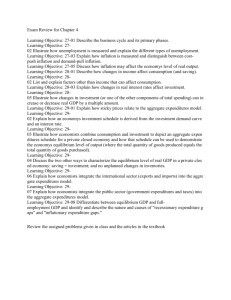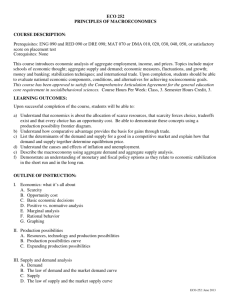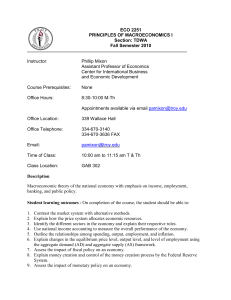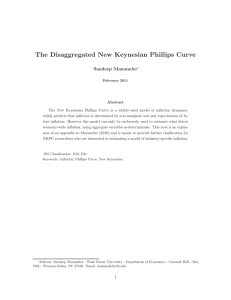Aggregate Supply/Demand
advertisement
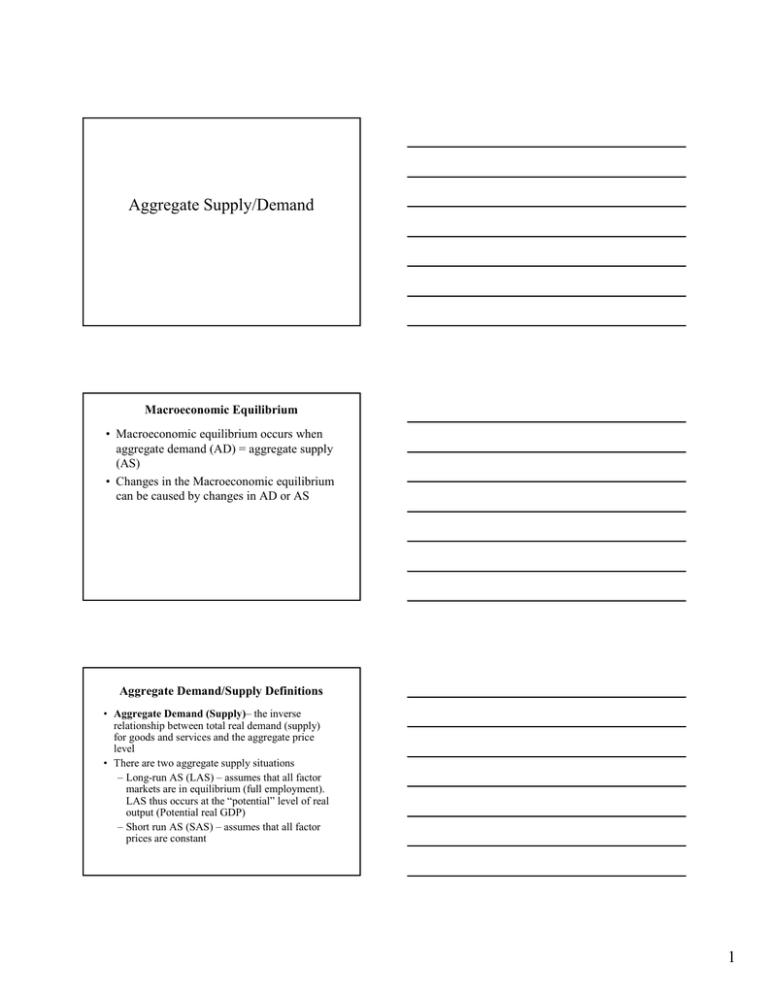
Aggregate Supply/Demand Macroeconomic Equilibrium • Macroeconomic equilibrium occurs when aggregate demand (AD) = aggregate supply (AS) • Changes in the Macroeconomic equilibrium can be caused by changes in AD or AS Aggregate Demand/Supply Definitions • Aggregate Demand (Supply)– the inverse relationship between total real demand (supply) for goods and services and the aggregate price level • There are two aggregate supply situations – Long-run AS (LAS) – assumes that all factor markets are in equilibrium (full employment). LAS thus occurs at the “potential” level of real output (Potential real GDP) – Short run AS (SAS) – assumes that all factor prices are constant 1 AD determinants • AD is a function of several variables – Policy Variables (M, g, t) – International Variables (E, y*, P*) – Expectational Variables (Π) • Thus, we can write that − + + − − + + + AD = f ( P | M g t E y * P * Π) AS Determinants • AS is a function of several variables – Factor availability (L,K) – Technology and incentives (tech) – Short run: factor prices (W) • Thus, we can write that 0 + + + LAS= f (P | L k tech) + + + + − SAS = f ( P | L k tech W ) Secular Trends • Output grows because of: – – – – Labor force growth More skilled labor force Investment Improved technology • These factors increase potential output and shift LAS • Note that prices rise if aggregate demand increases more than the secular rise in potential output 2 Cyclical Fluctuation Example • 1) 2) 3) 4) Suppose that a rise in AD causes output to rise above potential. Ouput increase raises factor demand. This causes factor prices to rise. Factor prices affect SAS. This wage/price adjustment continues until output falls back to potential. This causes no change in potential GDP but leads to inflation. Recessionary/Inflationary Gaps • Recessionary (Inflationary) Gap – the difference between the equilibrium level of GDP and the potential level of GDP when the economy is at less than (greater than) full potential • Inflation – Demand-Pull – inflation caused by increases in AD – Cost-push – inflation caused by continuous AS decreases 3



